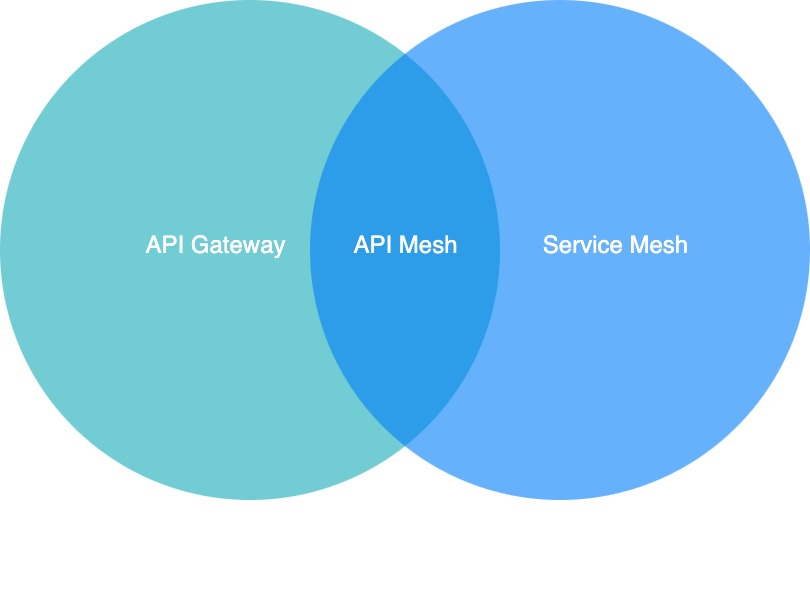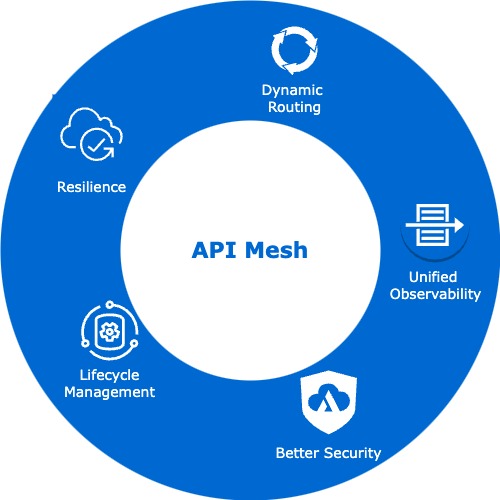API Mesh: The Next Big Leap in Distributed Backend Systems
API Mesh simplifies API management across distributed systems by unifying orchestration, enhancing security, optimizing routing, and improving scalability.
Join the DZone community and get the full member experience.
Join For FreeAPI Mesh simplifies API management across distributed systems by providing a unified layer for orchestration, security, and observability. In this article, we’ll explore the intricacies of API Mesh, its unique capabilities, and how it is set to redefine how businesses manage their APIs.
Understanding API Mesh
To understand the value of an API Mesh, we first need to distinguish it from other tools like API gateways and service meshes:
- API gateway. An API gateway acts as a single entry point for incoming requests to an API. Some of the activities handled by an API gateway include authentication, rate limiting, and routing of requests, thus making external-facing APIs secure and accessible.
- Service mesh. A service mesh places a focus on the management of communications between microservices over a private network. It offers efficient traffic control, load balancing, and observability within a contained environment.
- API Mesh. API Mesh represents an extension of the functionality of both API gateways and service meshes to handle API management across distributed environments, including internal and external APIs. It offers full control over API lifecycles, from design and deployment to monitoring and scaling, while simplifying orchestration and enhancing security.

The Growing Need for API Mesh
- Taming API sprawl. Companies build APIs to solve an immediate need. In time, they begin to proliferate across organizations built by different groups with inconsistent standards. The sprawl might be resultant of operational inefficiencies, bottlenecks, and problems around governance. API Mesh provides a place for organizing, managing, and governing APIs across the enterprise.
- Tool limitations beget bridges. While API gateways and service meshes are not only important but also fundamental, they are usually in silos. API gateways deal with external APIs, while service meshes handle internal microservices. API mesh fills this gap by extending end-to-end visibility and control to all APIs inside a distributed system.
- Preparing for scale. As businesses go global, their systems have to support millions of API calls per day. Resilience, fault tolerance, and scalability are no longer niceties — they are necessities. API mesh simplifies these complexities, enabling businesses to scale confidently while maintaining optimal performance.
Key Features of API Mesh
Dynamic Routing for Performance Optimization
The salient features of the API mesh are the intelligent routing of API traffic. It will make sure that all requests are routed to the best endpoint, depending on various factors like user location, server load, and network conditions.
Example
Online streaming platforms like Netflix will route a user request to the closest data center, which would enhance the experience.
Unified Observability
APIs across regions and environments and their monitoring challenge the above. API Mesh centralizes observability by offering real-time dashboards, metrics, logs, and traces to view API performance for actionable insight into API performance.
Example
A developer working on an e-commerce platform can see latencies, error rates, and request patterns across regions to spot bottlenecks a lot faster and resolve issues rapidly.
Better Security
Security becomes highly paramount in the financial, health, and retail sectors, where security should be treated as paramount. API Mesh enforces OAuth, JWT authentication, and zero-trust models on a very granular level to ensure security across APIs.
Example
Using API Mesh can enforce a token-based authentication for its payment APIs by using it. It also enforces rate limiting to avoid abuse of the same.
API Versioning and Lifecycle Management
API updates are inevitable, but poorly managed updates break client applications. API Mesh simplifies versioning, deprecations, and upgrades to make transitions seamless without affecting end users.
Example
A SaaS provider can notify clients about their API changes that are upcoming and can provide backward compatibility during the transition period.
Built-In Resilience
Failures are a fact of life for distributed systems, and be it a server crash, network outage, or third-party downtimes, API Mesh works to ensure continuous service with dynamic rerouting of traffic.
Example
An e-commerce company experiencing any kind of downtime at a payment gateway can route the requests easily to a backup provider for seamless checkout.

How API Mesh Works
- Centralized API registry. A catalog of all APIs ensures visibility with no duplication.
- Policy definition and enforcement. Admins define the policies for rate limiting, authentication, error handling, and many more, which are consistently applied to APIs.
- Intelligent traffic management. The traffic gets routed dynamically according to predefined policies. It balances the load and optimizes performance.
- Comprehensive observability. All metrics, logs, and traces come together into a single view of API health and behavior for proactive troubleshooting.
API Mesh Use Cases in Real-World Applications
1. E-Commerce
- Problem to overcome: Traffic spikes when running sales.
- Solution: API Mesh will dynamically scale APIs, efficiently route the traffic, and give real-time performance insights.
2. FinTech
- Problem to overcome: Security and compliance for interactions with payment APIs.
- Solution: API Mesh enforces strong security policies and integrates with fraud detection systems.
3. IoT
- Problem to overcome: Operational management of millions of connected devices along with their respective APIs.
- Solution: API Mesh orchestrates API requests for performance and effective usage pattern monitoring.
Popular Tools That Support API Mesh
- Kong Mesh. Melds API gateway and service mesh for hybrid API management.
- GraphQL Federation. Combines APIs into a single schema to make querying easier.
- Google Apigee. Advanced lifecycle management with observability tools.
Example: A logistics company uses Kong Mesh for managing real-time APIs that track packages and make sure that the communication between customers, drivers, and warehouses goes flawlessly.
What's Next for API Mesh?
AI-Driven Insights
In the future, API Mesh will use AI to predict traffic patterns, auto-optimize routing, and auto-suggest performance improvements.
Broader Industry Adoption
This will find its way into healthcare, education, and manufacturing, not limiting API Mesh to only 'technology-intensive' industries.
Deeper Cloud Integration
API Mesh will be more integrated with cloud platforms such as AWS, Azure, and Google Cloud for easy enabling of deployment in cloud-native architectures.
Final Thoughts
API management in today's world of distributed systems is becoming increasingly complicated. API Mesh, however, has a complete solution for this: it unifies API management, enhances security, and allows dynamic routing, thus making operations simpler while keeping systems scalable and resilient.
The key takeaway is that as API ecosystems grow, adopting API Mesh can help businesses streamline complexity, improve productivity, and future-proof their architectures. The time to embrace this transformative technology is now.
Opinions expressed by DZone contributors are their own.

Comments